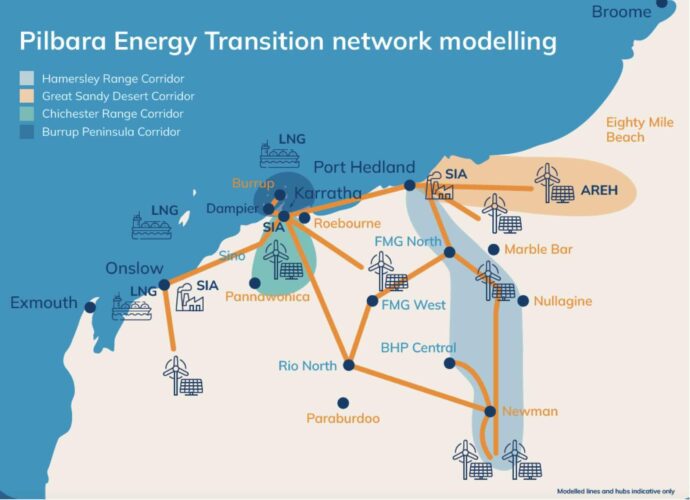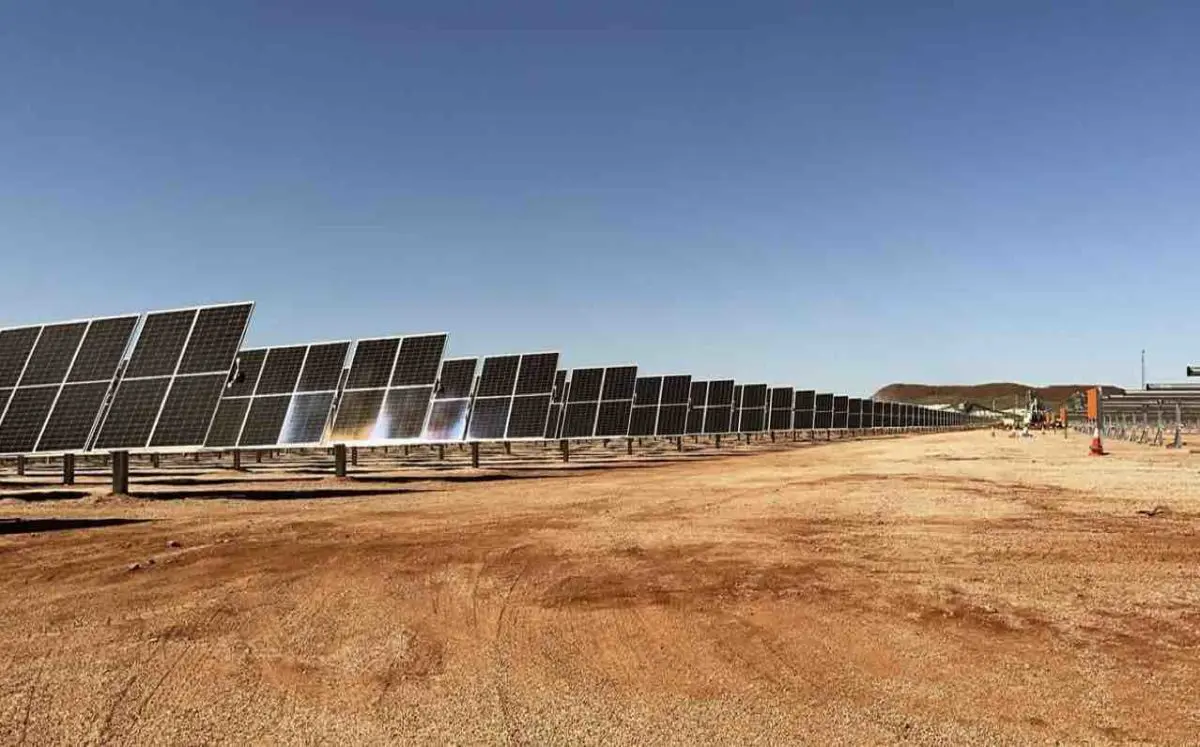The Pilbara region of north-west Western Australia – the world’s biggest iron ore mining province and the country’s most fossil fuel dependent economic region – is opening up to create up to four new renewable energy super-highways.
The W.A. government late last week formally opened a tender for expressions of interest in four priority transmission projects that will be critical for the Pilbara Energy Transition Plan.
The four new links will extend to the Burrup peninsular, where controversial gas and other big projects are being constructed, major towns and ports including Port Hedland, to the huge iron ore mines in the Pilbara, and the proposed Australian Renewable Energy Hub to the north, where some 26 gigawatts of wind and solar could be built.
The new transmission links will seek to link the major demand centres to the best wind and solar resources, and create a common network structure to enable the wind, solar and storage to be shared, unlike the near feudal arrangement that currently exists with privately owned transmission lines.
The Pilbara delivers huge riches to its mining owners – Australia’s richest person Gina Rinehart, Andrew Forrest, and global mining giants BHP and Rio Tinto. But it is also the most heavily dependent on fossil fuels – mostly gas and also billions of litres of diesel each year – with less than two per cent of its energy supply coming from renewables.
That is about to change. Forrest’s Fortescue Industries has a target of “real zero” for its “terrestrial” mining operations in the Pilbara, which means burning no gas or diesel for power, land transport or logistics by 2030.
Rio Tinto and BHP have less ambitious targets, but still want to cut their emissions by half over the next decade through investment in wind, solar and storage, and the electrification of haul trucks and excavators, while Rinehart is showing little interest in wind and solar, despite the obvious cost and emission savings identified by her rivals.
“Pilbara industries are heavily reliant on fossil fuels to provide the energy needed to support their operations,” the government document says. “Measured nationally, the Pilbara has the most significant share of scope 1 and scope 2 emissions under the Federal Safeguard Mechanism.
“As such, decarbonisation efforts will require mining operators and other heavy industries to transition their primary energy sources from gas and diesel to renewables, supported by storage, thereby increasing future regional renewable electricity demand.”
So far only a few solar and storage projects have been delivered, with Fortescue and Rio Tinto connecting a few small solar projects and building some big batteries as back up. But much more needs to be built – up to 16 terawatt hours of generation – to meet the power needs of the region.
The four transmission corridors identified in the new Pilbara energy plan are expected to share in the $3 billion in concessional finance made available to the state through the federal government’s $20 billion Rewiring the Nation plan, which seeks to provide the backing needed to get new transmission infrastructure built.

One proposed corridor seeks to increase the size of a proposed 132kV transmission line to the peninsular that was designed to support a 50 MW solar farm.
That will help support more local renewable energy projects, while the Chichester Range corridor to the south seeks to exploit good wind conditions – and good solar – on the hilly escarpment between 50 and 100 kms to the south.
The most important could be the Hamersley Range corridor, which looks to tap into the high quality wind resources to the east and south of the active iron ore and lithium mining areas.
The Great Sandy Desert corridor will seek to link the renewable resources proposed by AREH and other projects with the anticipated green iron industry that could be located in the planned strategic industrial area around Boodarie, near Port Hedland.






